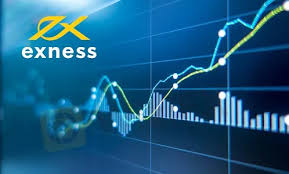Understanding the Exness Economic Calendar Maximize Your Trading Strategy

Understanding the Exness Economic Calendar
The exness economic calendar Exness broker provides traders with a comprehensive economic calendar that serves as an invaluable tool in understanding market movements. In this article, we will delve into the significance of an economic calendar, how it operates, and methods to effectively incorporate it into your trading strategy.
What is an Economic Calendar?
An economic calendar is a schedule of economic events and indicators that can influence the financial markets. These events may include national and international economic reports, policy announcements, and other relevant happenings that can affect the economy and market conditions. The data presented in the economic calendar typically cover a range of indicators, such as Gross Domestic Product (GDP), Employment Rates, Inflation Metrics, and interest rate decisions from central banks.
The Importance of the Exness Economic Calendar
For traders, being aware of the upcoming economic events can be a game-changer. The Exness economic calendar helps in planning trades accordingly, allowing traders to anticipate market volatility that often accompanies economic announcements. Understanding the timing of these events empowers traders to make informed decisions about when to enter or exit trades.

Additionally, the economic calendar helps in analyzing the correlation between fundamental data and market movements. For instance, if positive unemployment data is released, it might lead to an appreciation in the currency of that country. By monitoring these correlations, traders can position themselves advantageously.
How to Use the Exness Economic Calendar
To effectively utilize the economic calendar, follow these steps:
- Identify Key Economic Indicators: Focus on economic indicators that affect the financial instruments you trade. Indicators such as Non-Farm Payrolls, CPI (Consumer Price Index), and Manufacturing PMI are crucial for various markets.
- Stay Updated on Release Dates: Note the scheduled release dates and times of these indicators. Many traders also take into account the time zone adjustments necessary for their trading location.
- Assess Market Expectations: Different indicators have market expectations associated with them. Understanding these expectations can provide context on how actual results may impact market prices.
- Track Historical Data: Historical data can provide insights into how markets responded to similar economic releases in the past, helping traders gauge potential outcomes.
- Be Ready for Volatility: Major announcements can lead to sharp market movements. Prepare your trading plan in advance, considering stop-loss levels and position sizing to manage risk.
Integrating Economic Calendar Insights into Your Trading Strategy
Integration of economic calendar insights into your trading strategy can set a solid foundation for making decisions. Here are several tips to help incorporate economic data effectively:
- Combine Technical and Fundamental Analysis: While the economic calendar provides fundamental insights, complementing this data with technical analysis can enhance the overall strategy. Look for technical patterns that align with economic data trends.
- Use a Watchlist: Keep a watchlist of key indicators that greatly influence your trading decisions. Regularly review this list and adjust it based on changing market conditions.
- Risk Management: Make use of appropriate risk management tools. Given the unpredictability surrounding economic events, ensure you have measures in place to protect your capital.
- Focus on Market Sentiment: Beyond the numbers, pay attention to the overall market sentiment. News reports and articles surrounding an economic release can provide additional context.
Example of Analyzing an Economic Release
Let’s consider an example of how a trader might analyze a significant economic event using the Exness economic calendar:
Imagine the U.S. Non-Farm Payrolls (NFP) report is scheduled to be released. Prior to the release, a trader checks the economic calendar and notes market expectations suggest a gain of 200,000 jobs. If the report shows a deviation from this figure, say an increase of 250,000 jobs, the trader may expect a bullish reaction in the USD.
Based on this analysis, the trader could plan to enter a long position in USD-related pairs, potentially setting up a profit target while keeping a close eye on volatility that may follow the announcement.
Conclusion
The Exness economic calendar is a powerful tool that every trader should leverage. It provides vital insights into upcoming economic events that can influence market stability and volatility. By effectively utilizing this resource, traders can enhance their ability to anticipate market movements, allowing for more strategic and informed trading decisions.
As the financial markets continue to evolve, staying informed through tools like the economic calendar will be paramount to achieving trading success. Embrace the wealth of information available, and utilize it to your advantage—your trading strategy will thank you for it.
